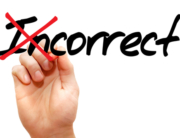When asked what I do for a living, after resisting the urge to adopt an outlandishly exciting persona, I say that I help people and groups. While I love my individual coaching work, I always get very excited when a client asks for help evaluating and addressing group-level issues. It is fun and interesting work. When learning to do this type of work early in my career, I was struck by the complex models and methodology that were used. What was especially puzzling was that often the actual issues identified and their solutions were straightforward. Since then, I have developed and used the following simple model for a variety of group assessment and development projects.
The model posits that all groups require leadership in the following four areas:

The model can be used for the following purposes:
Defining a group’s Leadership needs – While every group needs leadership resources in each of these four areas, the required mix may differ depending on function and mission. For example, a sales organization may have heavy Client Leadership and People Leadership needs but have comparatively less need for Operational Leadership.
Determining effectiveness of Leadership – For each of the areas I assess a group as “strong”, “adequate” or “weak” (I have specific assessment criteria, if you are interested please contact me). There are two overall themes regarding effectiveness that I see consistently:
- Inadequate resourcing – Groups may not allocate enough leadership resources to a given category. For example, I have seen Investment Banking groups which had many individuals focused on Client Leadership and Thought Leadership but not enough senior leader labor hours allocated to People Leadership tasks, such as like hiring or development.
- Skill and experience deficits – Individuals responsible for given leadership tasks may not have the requisite skills and experience. For example, a former line level manager is put into a COO role without having the needed Operational Leadership experience in technology or process engineering.
Assessing risk levels – I also assign risk ratings to describe the degree of exposure that leadership resources may be inadequate to meet future group needs. There are two themes I consistently see around risk:
- High levels of key man risk – A concentration of any of the areas of leadership responsibility placed on one individual.
- Lack of identified successors – Unfortunately, this generally goes hand in hand with key man risk, such that the same leaders who have concentrated power are also not focused on developing successors.
Results can be summarized in a score card.

In this example there were two main areas to address:
- Inadequate People Leadership
- Risk stemming from the senior leader owning key relationships
Based on the analysis, the group structure was changed to create a Deputy Head role responsible for improving People Leadership on an ongoing basis. This included creation and implementation of plans to improve recruiting and development.
Additionally, high potential employees were identified, provided with mentors outside of the group and given expanded People and Client Leadership responsibilities (depending on their skill levels in these areas). All key accounts were now required to have director level account managers (in addition to the key account manager). These director level account managers were expected to develop independent relationships at corresponding levels in the client organization.
Additional actions were taken but I hope this gives you a feel for how the model can help to stimulate change.
I hope you find this model useful. It is simple and clients like that. If you do use it, please feel free to reach out and let me know. I would love to get your feedback.
Avi Shatzkes
914 714 0776
[email protected]













Recent Comments